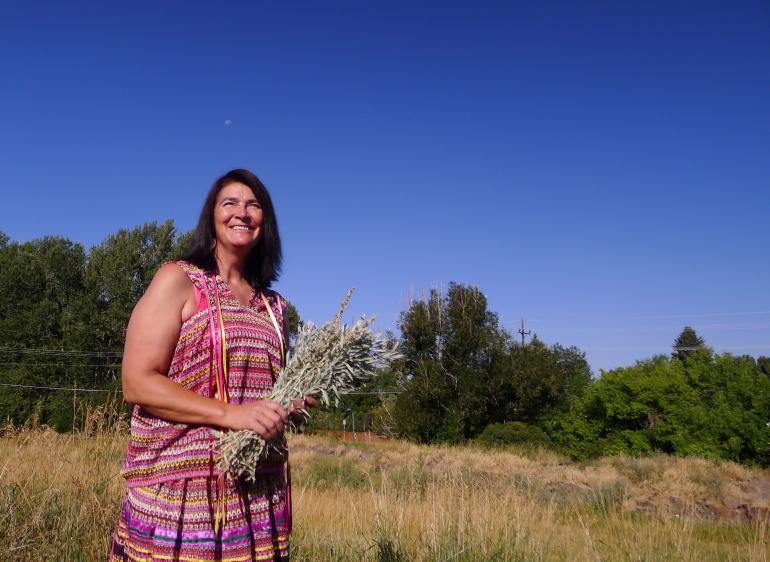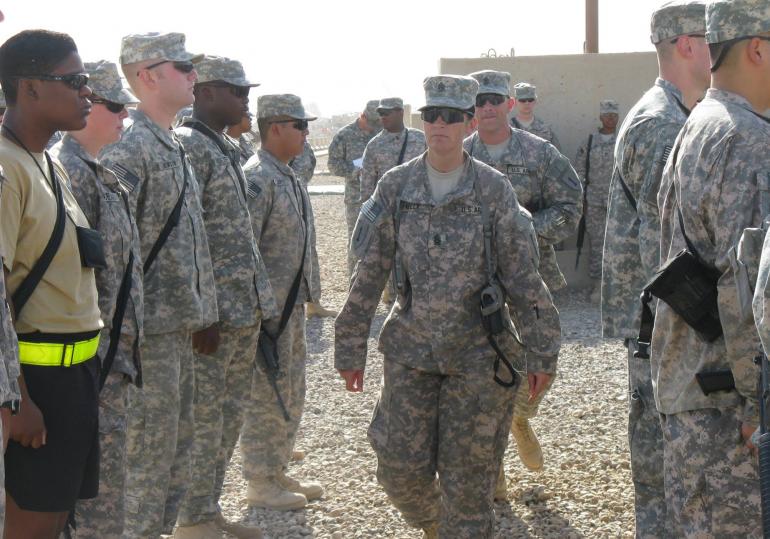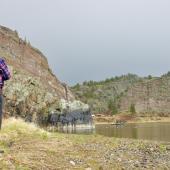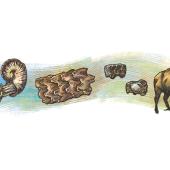Through the eyes of Native American Women Warriors
A war zone is not a place you might readily associate with home.
Sergeant First Class Mitchelene BigMan, however, was at ease as soon as she touched Iraqi ground during her first deployment in 2003. All around were reminders of her Crow Reservation upbringing: sheep and wells, tall dry grasses, houses not that different from her own. “It helped me identify with the place,” she recalled, “...even on the Rez you have to be careful.”
“I was probably the only one excited to be in Iraq –– my senses came into play.”
Her sense of tribal heritage, cultivated in the quiet, packed earth of southcentral Montana, went with her 7,000 mile trek, just as other Native Americans fought for the U.S. as early as the Civil War had done before her. In addition, she brought awareness of the stereotypes that awaited her.
BigMan strove to find a balance between staying open to the new and listening to the ways of her past. Surrounded by advanced military technology, now quite familiar to her, she instinctually looked to the sky and land for answers, as well. Using the North Star and the moon as a navigational device, she assisted others to safety, methods she once considered “ancestral folklore.”
While BigMan saw home, Julia Kelly brought a piece of home with her to the front.
The scent of burning sweet grass and diesel exhaust permeated the morning air. A line of combat patrol vehicles filed toward Command Sergeant Major Kelly, as she swept the Iraqi air with Montana sweet grass and imparted sacred Crow prayers.

Prayer in the Crow Nation is an essential prerequisite to any adventure: be it a new day, hunting, or warfare. One does not pray for oneself, says Dr. Walter Fleming, Chair of the Department of Native American Studies at Montana State University; individuals must pray for each other. It is a way for those away to connect to loved ones at home doing the same.
Kelly had planned on blessing her own crew before departing for talks with local leadership, but when word of the ceremony got out, a growing number of other soldiers waited patiently to take part. It was her way of following the Red Road, as it is known in her spiritual tradition, or the right path, one which brought her the courage and peace she hoped to impart to others. Kelly vowed to protect the soldiers just as she would her own children.
Ironically, both of these women joined the military early in life as a way to leave home — to escape domestic violence.
For Kelly, not all childhood memories are painful. Many days were spent learning the ways of her people: smoking fish with different woods, dressing out deer after hunting, the tedious but spiritually fulfilling task of beading, and putting up the teepee –– all while listening to wisdom from the elders.
Kelly had no inclination that she would trade her Montana lifestyle for a more arduous one. On the Rez, she knew her role: she was the “mean one” who would take care of the kids while the others went out to drink. But at 20, she wanted a better life for herself. “I went to my recruiter.”

This spirited desire to protect one’s own holds deep meaning for many Native American women. Oral tradition tells of the women who were left to defend camp while the men were out to hunt. The women didn’t wait around, however, if something seemed awry; the Battle of the Rosebud became known as, “The Battle of the Girl Who Saved Her Brother,” in remembrance of a Cheyenne girl who risked her life.
Veronica Maday, a member of the Bad River Band of Lake Superior Chippewa, who served in the Army and holds a Masters in Native American Studies, says that early Native Americans had less defined roles –– women could fight, men could be caretakers.
Today, in their own culture, women such as Kelly, BigMan, and Maday are regarded as warriors –– proving this to the outside world though, has been more complicated. Each woman experienced moments in which they were called to warrior status.
Once, in Iraq, the guys in Kelly’s unit were upset when they learned she had volunteered to go out on patrol. She knew that they would be entering a home, one in which an individual on the wanted list was last seen. She and her crew dressed in full gear and departed for the location.
Entering the alley-like street of the home on foot, Kelly felt trapped. The unit began to take fire. It was uncertain where the shots were coming from, so they took safety in doorways. Kelly remembers the hyper-vigilance that consumed her, as all her training and teachings came back in the moment –– the warrior within her. As they made their way to the home, shots followed.
“It makes you feel bad going into people’s homes because now you are placing that family in danger too. So you pray they don’t have a weapon that can blow up into the house. I thank the Lord that day that nobody got a bullet.”
BigMan also remembers times in which she had to engage in a combative situation. While taking supplies to a village in Iraq on a Red Cross Humanitarian mission, a riot broke out as snack bags were being handed out to children. The locals began to grab the weapons of the soldiers. BigMan held hers close.

“I remember my captain said, ‘run.’ We dropped everything. There were kids and mothers with babies. They are taught to sacrifice.”
With the loss of “linear” battle tactics in modern conflicts, there is no safe place. Combat affects all units, ability levels, and genders. The very act of deployment forces a mindset not common to 20 year olds. Maday remembers writing her will the week before she deployed, stating what would happen to her eight-month-old son if she were to die.
Yet to be a warrior means more than the ability to sacrifice and fight skillfully. Finding commonality, even among those you are told are enemy, is part of the code. Kelly understood this first with Korea.
“The North and the South are the same people. In Iraq, it was the same thing. Being older and getting to see it is different,” she acknowledged, from her home today in Billings, Montana, “You look at the culture and we’re still the same.”
All three women are back home again after serving –– Maday for 5 years, BigMan 22 and Kelly 28.
With their uniforms hung in closets awaiting special occasions, the dust of foreign lands now only in their memories, and the sound of gunfire coming alive at the sudden slam of a car door –– these women are far from the action they once knew. Action now means something altogether different: BigMan formed the nation’s first all Native American women’s color guard and performed for the President’s 2013 inauguration; Kelly is an advocate for PTSD awareness and team leader for a disabled veteran color guard; Maday is Executive Director for Indian Nonprofit Alliance, dedicated to assisting tribal nonprofits –– proving that warriors do exist, and you can refer to them as “She.”
Maria Munro-Schuster grew up on the Fort Peck Reservation in Northeastern Montana. Gaining insight into others’ perspectives is her life’s passion. She teaches middle school at Headwaters Academy in Bozeman.












Leave a Comment Here